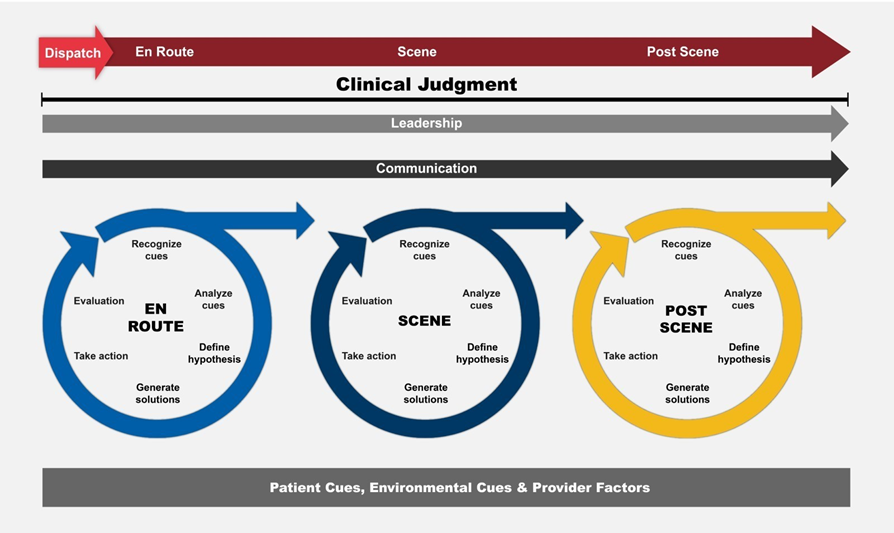The ALS Psychomotor Examination
The ALS examination currently exists in two pieces, the psychomotor examination, and the cognitive examination. Previously, our psychomotor examination stood as the tool for measuring candidates’ clinical judgment (reasoning and decision making), leadership, and communication skills. Futuristically, our newly introduced ALS examination will have a performance examination section that will take over that measurement of clinical judgment.
The Clinical Judgment Framework

The paper, “A Framework for Clinical Judgment in EMS” authored by Mihaiela R. Gugiu, PhD, Ashish R. Panchal, MD, PhD, Thomas E. Platt, EdD, and Kim Mckenna, PhD, MEd, BSN, NRP defines and explains the clinical judgment domain and how it works in EMS.
The framework intends to help the larger EMS community understand theoretical and foundational concepts around clinical judgment, leadership, and communication. This has been publicly identified as an industry needed skill. When we as an industry understand constructs around cognition, we can improve reasoning and decision making while enhancing our clinicians’ knowledge and skills, contributing to safer patient care.
Creating materials for the community
We are actively working with the EMS community to create more in-depth materials to help expand education and to develop additional tools to support our work. The framework above and the attached template were created to communicate, at a high-level, the cognitive science of decision making. The PDF template will be helpful to educators and Program Directors who prepare our future workforce–click here for the template. It should not, however be confused with an algorithm or skill sheet. The goal of this template is further educator comfort and to increase understanding of clinical judgment for classroom, clinical, and field growth.
Clinical judgment is a complex and dynamic concept. As the industry expands its understanding, the notion can be refined. For educators, the template can be used early during professional development when designing curricula for AEMT and paramedic students. The goal of this communication is to enhance the skillsets and to provide an illustration of the model for a better level of awareness.
The template exemplifies the six steps of clinical judgment (found within the circles) for each of the three phases of an EMS call (en route, scene, and post scene). Additionally, the template includes enrichment concepts that impact clinical judgment such as provider KSAs, time pressures, environmental factors, available resources, scene elements, and much more. These components can help to better construct an EMS event in an authentic, contextual, and cognitively appropriate level for an entry-level provider, with a sound level of fidelity. These areas have been identified with methodical rigor by researchers, with significant assistance and contributions from a large collection of EMS subject matter experts.
Updated: March 21, 2022
